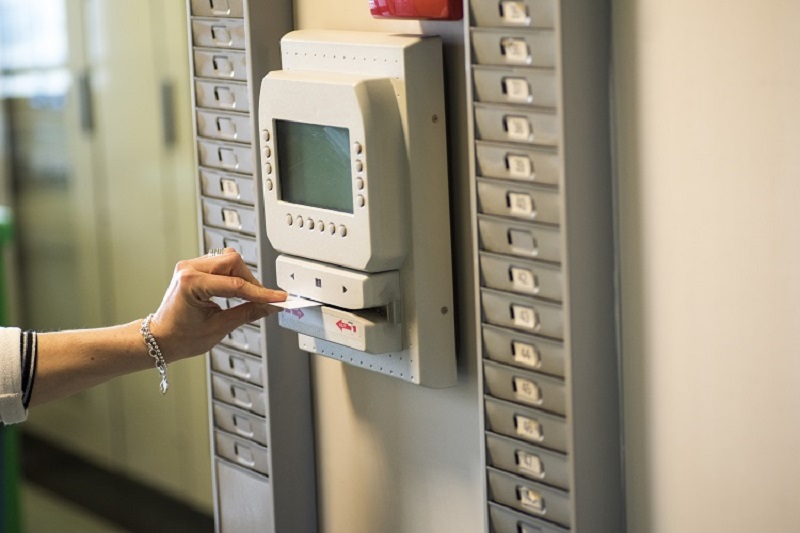In the modern era, time is more than just a commodity — it’s the cornerstone of productivity and efficiency in the workplace. How we measure, track, and manage time can significantly impact a business’s bottom line. This is where the Electronic Time Clock comes into play, transforming timekeeping methods and revolutionizing work environments. But what exactly is an Electronic Time Clock? How does it work, and what benefits does it bring to businesses?
Evolution of Time Clocks
The concept of time tracking is as old as work itself. Yet, it was only in the late 19th century that it truly took shape with the introduction of mechanical time clocks. Picture this: a bustling factory floor, workers lined up at the start and end of their shifts, punching their time cards in a clock. This manual system was an early attempt to record, manage and measure the work hours of employees.
However, it was not without its flaws. These early time clocks were often susceptible to errors and, in some cases, intentional manipulation. After all, a misplaced punch could easily result in inaccurate records. That meant pay discrepancies, conflict, and a host of other management headaches.
Fast forward to the digital age and the landscape of timekeeping has been completely transformed. Gone are the days of manual punching and paper-based records. Instead, we have electronic time clocks that record work hours with unprecedented accuracy and efficiency.
So, whether you’re a business owner, a manager, or an employee, the evolution of time clocks is something to be celebrated. It’s a testament to how far we’ve come, and how technology continues to drive progress in the workplace.
Understanding Electronic Time Clocks
Electronic Time Clocks, the revolutionary technology that is reshaping how businesses record employee work hours, are more than just an upgrade from traditional manual timekeeping methods. They introduce a new level of precision, reliability, and convenience that is transforming workplaces across Australia and beyond.
Moreover, with mobile access, employees can clock in or out from anywhere, a feature that is particularly useful in today’s increasingly remote and flexible work environment. This ease of access makes Electronic Time Clocks a versatile solution, accommodating various work arrangements without compromising on accuracy or reliability.
In essence, Electronic Time Clocks are transforming the way businesses operate, providing a smarter, more efficient way to manage employee time. They are the future of workplace timekeeping, offering a level of accuracy, convenience security that traditional methods simply can’t match.
Features of Electronic Time Clocks
What sets Electronic Time Clocks apart are their innovative features:
– Real-time Tracking: These systems provide real-time data on employee work hours, enabling managers to monitor productivity and manage resources effectively.
– Accuracy and Compliance: By automating time tracking, electronic time clocks eliminate manual errors and help businesses comply with labor laws.
– Flexibility: With mobile access and cloud-based systems, employees can clock in & out from anywhere, making it ideal for remote work.
– Data Integration: Electronic Time Clocks can integrate with payroll systems, ensuring accurate paychecks and reducing administrative tasks.
– Security: Features like biometric recognition prevent ‘buddy punching’, ensuring that the person clocking in is indeed the employee.

Benefits of Using Electronic Time Clocks
The implementation of electronic time clocks brings numerous benefits:
– Enhanced Productivity: By automating timekeeping, employees can focus on their core responsibilities rather than administrative tasks.
– Cost Savings: Accurate time tracking prevents overpayment and reduces administrative costs associated with manual timekeeping.
– Employee Accountability: With real-time tracking, employees are held accountable for their time, promoting a culture of honesty and integrity.
– Simplified Payroll: The integration with payroll systems simplifies the process, ensuring employees are paid accurately and on time.
– Better Decision Making: The data provided by electronic time clocks can help managers make informed decisions about staffing, scheduling, and budgeting.
Conclusion:
The evolution from manual timekeeping to electronic time clocks is a testament to the relentless march of technology. As businesses continue to seek ways to optimize productivity and efficiency, the role of electronic time clocks is set to become even more prominent. With their advanced features and proven benefits, they are fast becoming an indispensable tool in the modern workplace.
In a world where time is money, isn’t it time we invest in tools that help us manage it more effectively? The Electronic Time Clock is one such tool, offering a smart, accurate & efficient way of timekeeping that can transform the way businesses operate.









